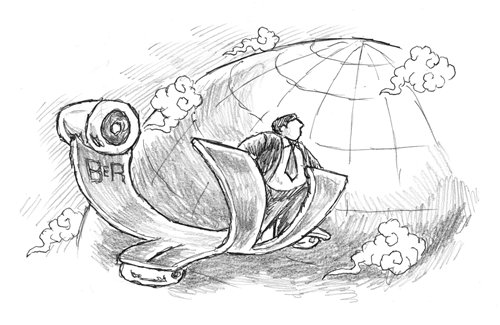COMMENTS / EXPERT ASSESSMENT
China strides into future under guidance of Party

Illustration: Peter C. Espina/GT
Since the 18th National Congress of the Communist Party of China (CPC) in 2012, the Central Committee of the Communist Party of China (CPC) with Comrade Xi Jinping at the core, has made groundbreaking achievements in economic development.Confronted with a complicated economic environment at home and abroad, profound adjustment in the world economy and mounting downward pressure on China's economy, the CPC Central Committee has beefed up efforts to develop the economy under the "new normal," offered new ideas, thoughts and strategies, formulated important guidelines and policies, and rolled out many significant measures to boost economic growth.
China's economic development stands at a junction point, where the groundwork will be laid for realizing the Chinese Dream of national rejuvenation.
In its current stage of development, China has to deal simultaneously with slowing economic growth, making difficult structural adjustments, and absorbing the effects of previous economic stimulus policies, coupled with overcapacity, highly leveraged enterprises and interlinked risks and challenges.
China introduced supply-side structural reform and focused on five priorities: cutting overcapacity, reducing excess inventory, deleveraging, lowering costs and strengthening areas of weakness. All these steps involved a bid to address structural imbalances.
By carrying out these deep reforms, China has made considerable headway in upgrading its economic structure, fostering new growth drivers, generating new elements, new industries and new models of business, and encouraging people to start businesses and make innovations. These developments will enable the nation to tackle conundrums in economic construction and open a new chapter of economic development.
China's economy has maintained a medium-high rate of growth and its national strength has improved remarkably, contributing a lot to world economic growth and benefiting Chinese people.
Data from the National Bureau of Statistics showed that China's annual GDP growth rate from 2013 to 2016 was 7.2 percent, higher than the average 2.6 percent growth of the world economy and the average 4 percent growth of developing economies during the same period.
In 2016, China's GDP reached $11.2 trillion, which accounted for 14.8 percent of the world's total, ranking second in the world. Between 2013 and 2016, the contribution of China's economy to world economic growth stood at around 30 percent on average, surpassing the total contribution of the US, eurozone and Japan.
China's medium-high growth rate, coupled with low inflation, has delivered development dividends to the public and improved living standards. According to the State Council Leading Group Office of Poverty Alleviation and Development, the number of Chinese living in poverty dropped from 98.99 million to 43.35 million from 2012 to 2016.
The CPC Central Committee has been committed to drawing up a blueprint for regional development and fostering new growth engines. Since the 18th CPC National Congress, the country has stepped up work to implement important initiatives, such as the Beijing-Tianjin-Hebei integration, the Yangtze Economic Belt and the Guangdong-Hong Kong-Macao Greater Bay Area. These projects are a way to allocate resources, promote the formation of urban clusters and upgrade regional and industrial patterns. In the process, new elements, resources and growth drivers are contributing to economic development, and new foundations, areas and patterns have been gradually developed for economic growth.
The CPC Central Committee has fully utilized global resources, markets and demand to expand China's opening-up to the world. More solid efforts have been made to pursue the Belt and Road initiative, enhance connectivity among Asian and European countries, and foster new models of international economic cooperation. China's international competitive edge has been improved through such efforts as the establishment of the Asian Infrastructure Investment Bank, the BRICS New Development Bank, yuan internationalization and the building of free trade zones.
In addition, new ideas, visions and plans for global governance have been proposed at international forums, such as the G20 summit, the BRICS summit and the Forum on China-Africa Cooperation.
Despite great achievements in economic construction, the CPC Central Committee is also keenly aware that the world economy is still complicated and China's economy still faces challenges as it remains in an "L-shaped" trajectory of slowing growth. For example, notable imbalances exist between government revenue and expenditures in some localities, high levels of indebtedness remain in some enterprises, shadow banking and real estate bubbles merit high vigilance, and potential economic risks like "black swans" and "gray rhinos" linger.
As China is at a crucial and challenging stage in its own development, these problems and difficulties should be handled properly to ensure a sound basis for sustained economic development and lay a solid foundation for realizing the Chinese Dream.
The author is Party chief and deputy dean of the School of Economics at Renmin University of China. bizopinion@globaltimes.com.cn
Read more in Special Coverage:

